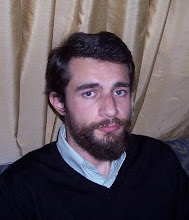The primate orbitofrontal cortex contains the secondary taste
cortex, in which the reward value of taste is represented. It
also contains the secondary and tertiary olfactory cortical
areas, in which information about the identity and also about
the reward value of odors is represented. The orbitofrontal
cortex also receives information about the sight of objects
and faces from the temporal lobe cortical visual areas, and
neurons in it learn and reverse the visual stimulus to which
they respond when the association of the visual stimulus with
a primary reinforcing stimulus (such as a taste reward) is reversed.
However, the orbitofrontal cortex is involved in representing
negative reinforcers (punishers) too, such as aversive taste,
and in rapid stimulus–reinforcement association learning
for both positive and negative primary reinforcers. In complementary
neuroimaging studies in humans it is being found that areas
of the orbitofrontal cortex (and connected subgenual cingulate
cortex) are activated by pleasant touch, by painful touch, by
rewarding and aversive taste, and by odor. Damage to the orbitofrontal
cortex in humans can impair the learning and reversal of stimulus–
reinforcement associations, and thus the correction of behavioral
responses when these are no longer appropriate because previous
reinforcement contingencies change. This evidence thus shows
that the orbitofrontal cortex is involved in decoding and representing
some primary reinforcers such as taste and touch; in learning
and reversing associations of visual and other stimuli to these
primary reinforcers; and in controlling and correcting reward-related
and punishment-related behavior, and thus in emotion.

Figure 1. Schematic diagram showing some of the gustatory, olfactory, visual and somatosensory pathways to the orbitofrontal cortex, and some of the outputs of the orbitofrontal cortex. The secondary taste cortex and the secondary olfactory cortex are within the orbitofrontal cortex. V1, primary visual cortex. V4, visual cortical area V4. Abbreviations: as, arcuate sulcus; cc, corpus callosum; cf, calcarine fissure; cgs, cingulate sulcus; cs, central sulcus; ls, lunate sulcus; ios, inferior occipital sulcus; mos, medial orbital sulcus; os, orbital sulcus; ots, occipito-temporal sulcus; ps, principal sulcus; rhs, rhinal sulcus; sts, superior temporal sulcus; lf, lateral (or Sylvian) fissure (which has been opened to reveal the insula); A, amygdala; INS, insula; T, thalamus; TE (21), inferior temporal visual cortex; TA (22), superior temporal auditory association cortex; TF and TH, parahippocampal cortex; TG, temporal pole cortex; 12, 13, 11, orbitofrontal cortex; 35, perirhinal cortex; 51, olfactory (prepyriform and periamygdaloid) cortex. Most of the forward projections shown in this diagram have corresponding backprojections (Rolls and Treves, 1998).
Edmund T. Rolls
The Orbitofrontal Cortex and Reward Cereb. Cortex 10: 284-294.
http://cercor.oxfordjournals.org/cgi/content/full/10/3/284


No comments:
Post a Comment